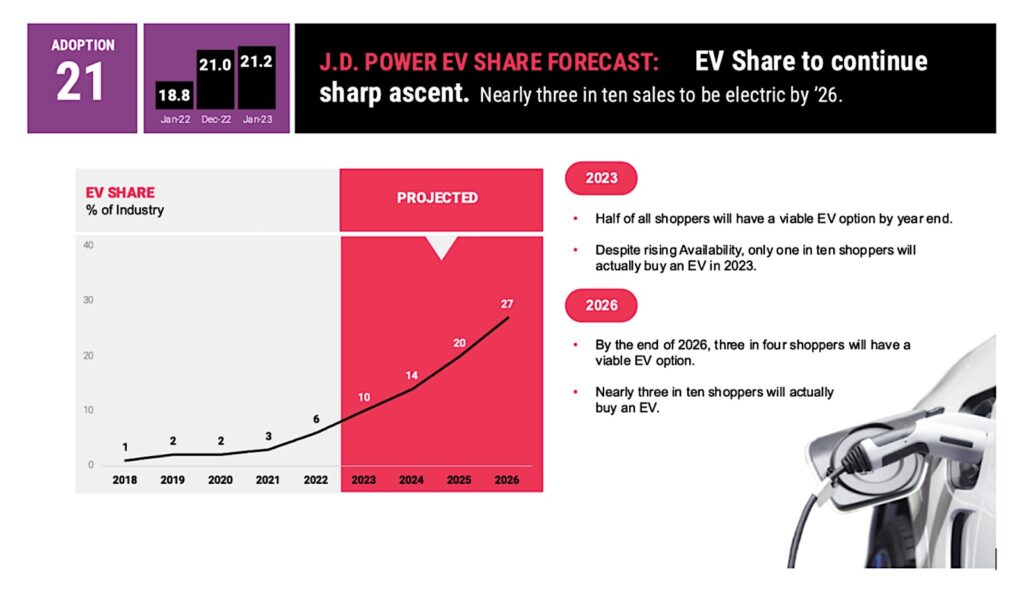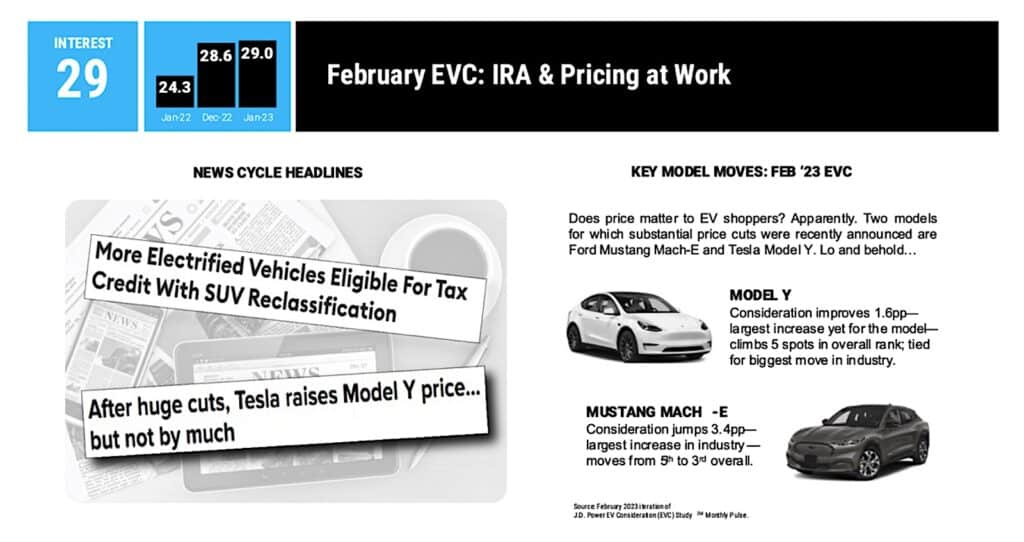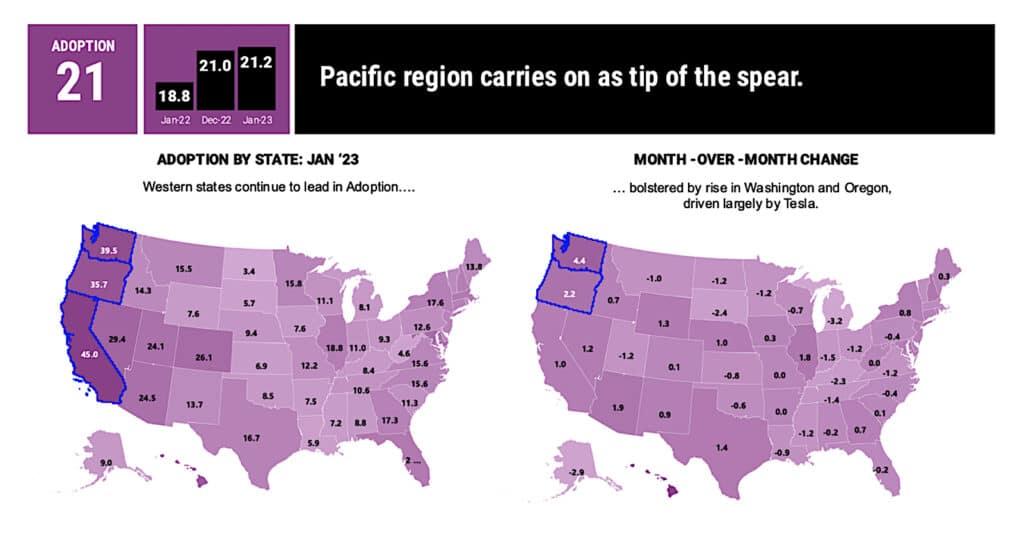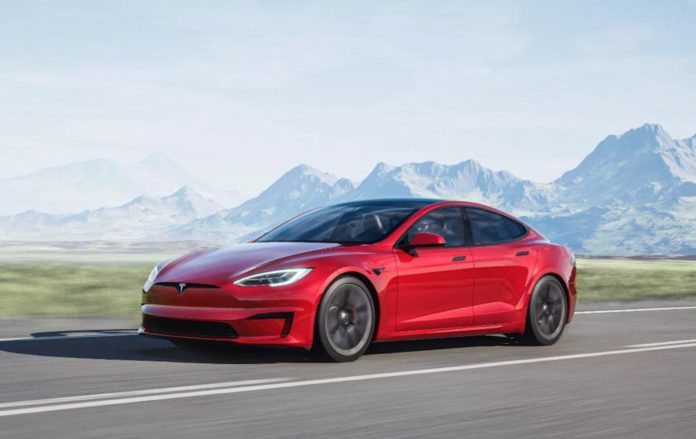EV sales have grown sharply during the past few years, reaching a record 8.5% of the U.S. new vehicle market in February — but for many potential buyers, high sticker prices, rather than range, have become the key reason why they’re staying out of the market.
As automaker’s battle to build volume and gain market share that’s setting to stage for “a new era of EV price wars,” according to a new study released by J.D. Power. Tesla fired the first shot early this year by cutting the cost of its most popular products by as much as 20%. Ford followed with discounts on its Mustang Mach-E. While a number of other manufacturers have resisted joining the fray they may have no choice but to follow suit if they want to remain competitive, Power’s new E-Vision Intelligence Report suggests.
“Consumer interest in EVs is increasingly being heavily swayed by price, with a clear correlation emerging between consumer demand and government incentives, lease deals and manufacturer price cuts,” a summary of the study said.
The price of the typical battery-electric vehicle came in around $65,000 last year, about $17,000 more than the average gasoline-powered model. The EV number is a bit misleading as manufacturers have largely focused on higher-end segments with their current all-electric models. Still, under an apples-to-apples comparison, the gap is still more than $10,000, according to industry data.

Purging the surge
If anything, EV prices surged during the second half of 2022, automakers aiming to recover heavy investments, as well as rising costs for critical commodities like lithium, nickel, cobalt and manganese. Ford, on average, added about $15,000 to the MSRP of its F-150 Lightning line.
But Tesla delivered a shock when it announced short-term price cuts in December, a move originally seen aimed at meeting year-end sales targets. But it announced new, 20% cuts on its wildly popular Model 3 sedan and Model Y SUV in January.
Ford quickly responded with cuts on the Mach-E — though not on the Lightning. Other manufacturers, including GM, have resisted following suit — for now — but the new Power study forecasts that resistance is futile.

Influence of incentives
Which manufacturers will give in first could depend upon revised federal EV incentives. The new Inflation Reduction Act provides up to $7,500 in federal tax credits — but only for vehicles assembled in the U.S. or in plants in a handful of allied nations, including Canada and Mexico. Further complicating matters, regulators are expected to release new guidelines next month that also will cover where EV batteries are produced, and where their raw materials come from.
Manufacturers who meet the IRA guidelines will have a significant advantage — as much as $7,500 — over competitors that import their EVs.
That already is leading to a rush by automakers like Volvo, Polestar, Hyundai and Mercedes-Benz to set up North American EV- and battery-manufacturing plants.

Change has arrived
It’s clear that the days of pricing EVs at the limits of what the market will bear are over. During a news conference on Monday, Kia President and CEO Ho Sung Song said the automaker had yet to lock down the price of the EV9 SUV it will launch during the second half of this year. Kia planners, he said, are closely watching competitors to see where the market is moving.
A price war in the EV market comes at a time when the industry is already facing plenty of headwinds, including semiconductor shortages, rising commodity prices and the overall surge in inflation.
And it could be particularly challenging for manufacturers who haven’t gotten EV production costs under control, said John McElroy, an industry veteran and host of the business-focused Autoline:Detroit streaming video program.
Ford this month confirmed it will lose an estimated $3 billion on its EV operations this year, up from $2.1 billion in 2022.
And it’s not alone. Only a handful of automakers are believed to be producing EVs at a profit, primarily Tesla. The upstart brand, in fact, has twice the profit margins of Mercedes, which has the highest numbers among any legacy manufacturer.
As a result, Tesla has room to “cut prices even more,” making it even more difficult for the competition, said McElroy. It is making it “all the more difficult for legacy and other EV startups to hit the profit margins they need.”

